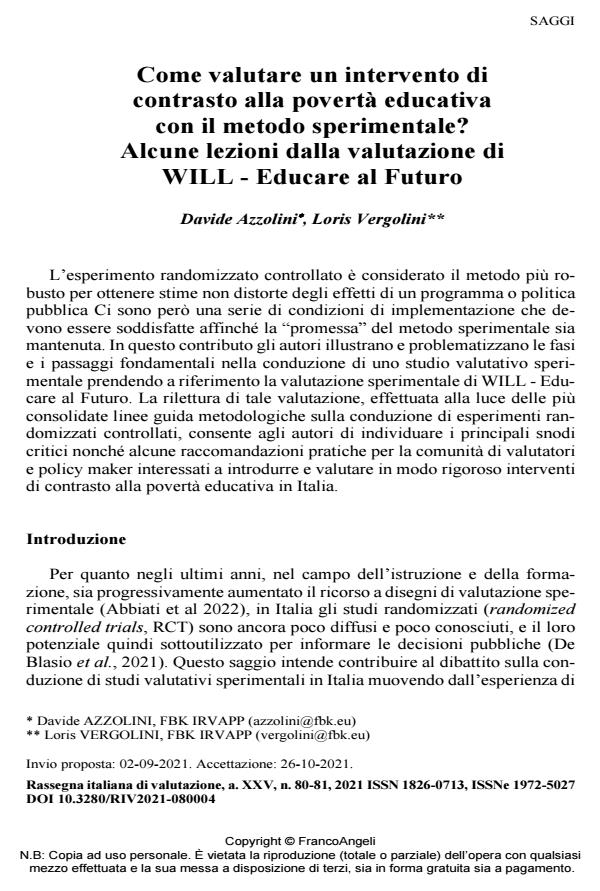Come valutare un intervento di contrasto alla povertà educativa con il metodo sperimentale? Alcune lezioni dalla valutazione di WILL - Educare al Futuro
Journal title RIV Rassegna Italiana di Valutazione
Author/s Davide Azzolini, Loris Vergolini
Publishing Year 2022 Issue 2021/80-81
Language Italian Pages 24 P. 58-81 File size 332 KB
DOI 10.3280/RIV2021-080004
DOI is like a bar code for intellectual property: to have more infomation
click here
Below, you can see the article first page
If you want to buy this article in PDF format, you can do it, following the instructions to buy download credits

FrancoAngeli is member of Publishers International Linking Association, Inc (PILA), a not-for-profit association which run the CrossRef service enabling links to and from online scholarly content.
Davide Azzolini, Loris Vergolini, Come valutare un intervento di contrasto alla povertà educativa con il metodo sperimentale? Alcune lezioni dalla valutazione di WILL - Educare al Futuro in "RIV Rassegna Italiana di Valutazione" 80-81/2021, pp 58-81, DOI: 10.3280/RIV2021-080004